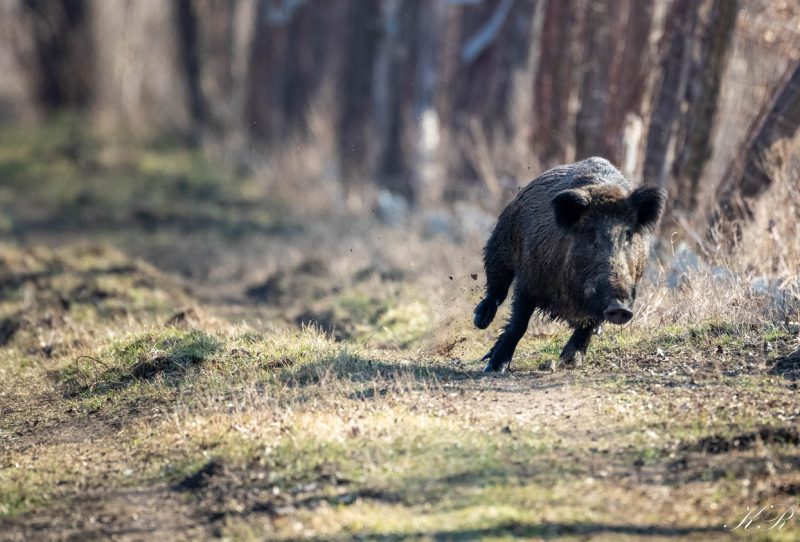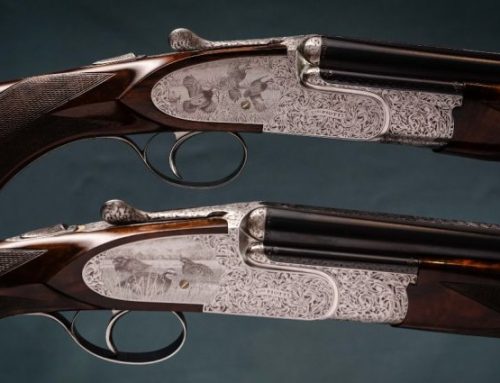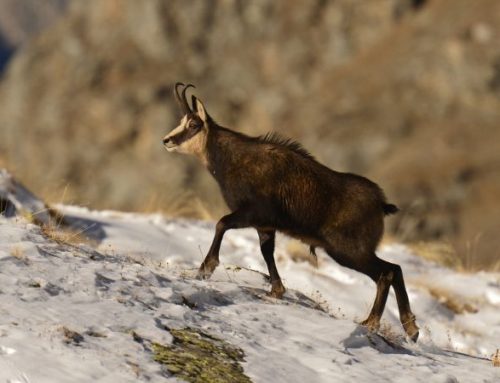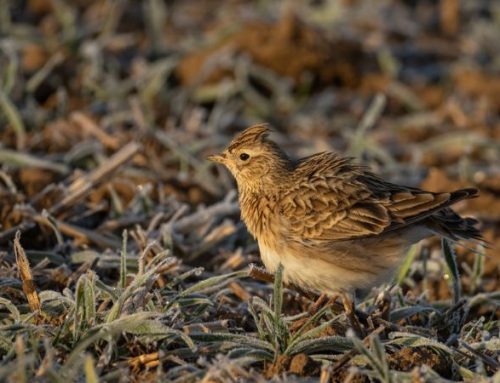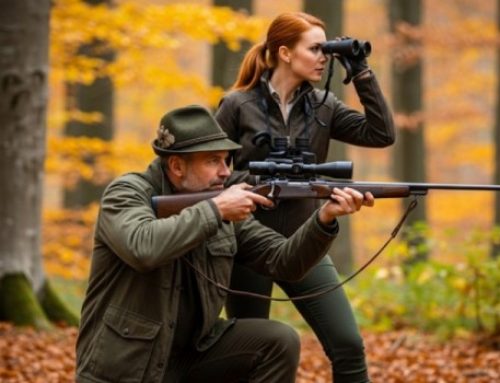Boar hunting is one of the most thrilling and challenging forms of hunting, deeply rooted in the traditions of many European countries.
Boar hunting captivates enthusiasts with its variety of methods, each offering a distinct thrill. From large-scale collective hunts to solo stalking, each technique caters to different landscapes and personal styles, adding richness to the hunting experience. The allure of boar hunting lies in this adaptability—hunters can engage in the bustling, camaraderie-filled excitement of a large battuta or braccata, where dozens of hunters and beaters work in sync to drive the boars toward designated positions, heightening the drama of each encounter.
In these scenarios, hunters relish the intense group energy, the symphony of hound calls, and the palpable anticipation that builds as the boars approach. The challenge and spontaneity of collective hunting create a thrilling spectacle, immersing hunters in an age-old tradition that strengthens community bonds and shared passions.

Two wild boars running away in the thick of the wood
For those seeking solitude and patience, individual methods like stand hunting or stalking bring their own allure. Stalking, for instance, places the hunter in a slow, calculated pursuit, heightening the connection with the natural environment as they move quietly through dense woods and undergrowth. This approach demands focus, skill, and an acute awareness of boar behavior, offering a deeply rewarding experience when the hunt proves successful. Stand hunting, often done from elevated blinds, involves waiting for the perfect moment, testing the hunter’s patience and precision. In both techniques, hunters appreciate the meditative quality of time spent alone in the wild, with only the sounds of nature as company.
Each method also suits specific terrains, giving hunters the chance to explore diverse landscapes. In Italy, where boar hunting is especially popular, each region—from the thick forests of Umbria and Tuscany to the rugged hills of Calabria—presents unique challenges. Hunters adapt their approach to these varied settings, allowing them to build an intimate knowledge of the land and the habits of their quarry.
Whether hunting in the thick of a collective drive or moving quietly on a solo stalk, boar hunting offers experiences that fulfill both a sense of tradition and a personal connection to the outdoors. This variety keeps hunters returning season after season, drawn by the distinct blend of challenge, skill, and adventure that only boar hunting can provide.
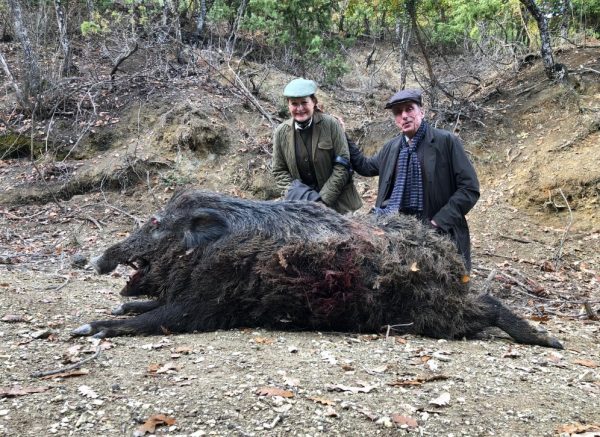
A massive wild boar male hunted in the Montenero shooting estate near Todi in Italy
Collective Boar Hunts
Collective hunts, deeply woven into the fabric of European hunting culture, are an experience that merges the art of tradition, strategy, and a strong sense of camaraderie. In Italy, two primary forms of collective hunts stand out: the grandiose and often theatrical battuta and braccata driven hunts, and the more intimate, precision-oriented girata hunt. Both types offer a glimpse into Italy’s centuries-old hunting heritage, reflecting techniques that date back to ancient times and have been passed down through generations.
Driven hunts are steeped in history and have roots that reach back to the medieval era when hunting was both a sport and a survival skill. Royal courts across Europe often organized elaborate driven hunts to provide entertainment for nobility, combining skilled horsemanship, trained dogs, and coordinated beaters to flush out game. In Italy, the battuta and braccata styles are distinct adaptations of this age-old practice, each with its unique characteristics and regional variations.
The Girata Hunt
The “girata” is a collective hunt ideal for areas requiring minimal disturbance to other wildlife. Usually practiced near urban settlements or protected areas, the girata is smaller and more contained than other forms of collective boar hunting, involving a limited number of hunters, typically 9 to 10. Only one specially trained hound, often a scent-trailing dog like the Basset Hound or Dachshund, is used to locate the boars.
Once the hound detects the boars’ hiding spots, the hunters form a loose perimeter around the area. The hound then drives the animals towards the posts where hunters, positioned along known paths, await the boars’ approach. This method, characterized by its restraint and precision, often yields a satisfying day with multiple hunts across different areas.
The Braccata Hunt
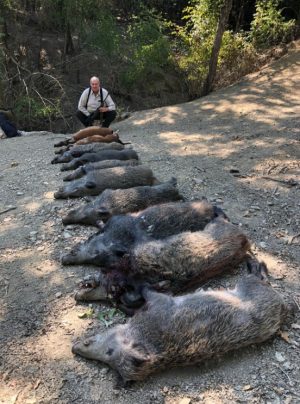
At dawn, hunters search for signs of boar activity, such as fresh tracks and bedding areas. Once boars are located, hunters encircle the animals’ hiding spots, positioning themselves along familiar routes the boars may use to escape. When ready, the beaters and hounds are released, igniting a chorus of barking and shouting that heightens the thrill of the hunt. The cacophony of dogs barking, coupled with the calls and commands of the beaters, fills the air, creating an adrenaline-charged environment.
The Battuta Hunt
Popular in Eastern Europe, the battuta hunt is a larger and more colorful spectacle, often involving entire communities. Men, women, and even children participate as beaters, forming a dense line that combs through expansive areas of woodland. The collective force of the advancing line pushes the boars toward waiting hunters. This technique is especially suited to vast, open landscapes where a high number of participants can be accommodated, making it an unforgettable and festive hunting experience.
Individual Hunts
For those who prefer a more solitary approach, there is the option of the ambush, or “caccia alla posta.” This technique involves patiently waiting for boars to arrive at feeding or watering spots. Conducted mostly from elevated blinds, this style is selective and allows hunters to target specific animals, often with a rifle rather than a shotgun. This approach is widely practiced across Europe and has proven effective for population control in areas where boar numbers threaten agricultural land.
In regions with high boar density, individual hunts are sometimes integrated into wildlife management plans. Hunters are assigned specific animals based on age and gender, ensuring that only target individuals are harvested, thereby helping to preserve the balance of the ecosystem.
Choosing the Right Gear
The choice of weapon varies depending on the type of hunt:
- Rifles: Rifles with calibers between .308 Winchester and .30-06 Springfield are common choices for individual hunts, as they provide the precision needed for longer-range shooting. These calibers offer a balanced blend of power and accuracy, essential for ensuring ethical and effective shots at a distance.
- Shotguns: For driven hunts like the braccata or battuta, semi-automatic shotguns or double-barreled guns in 12-gauge are favored. The fast cycling of a semi-auto is invaluable during the rapid firing often required in these hunts. Shotguns with barrels between 60-66 cm and open chokes (such as /) are ideal for close-range shots in dense vegetation.

The beautiful semi-automatic rifle Benelli Endurance the state of the art for wild boar driven hunts
Why Boar Hunting is Thriving
Boar hunting’s appeal has surged over recent decades. Once confined to select areas, boars have expanded their range significantly since the 1980s, becoming a widespread game species across Europe. As boar populations increase, they have become a favorite game for hunters and, in some cases, are now subject to management programs aimed at curbing overpopulation and mitigating agricultural damage.
The thrill, tradition, and beauty of boar hunting continue to captivate hunters around the world. Whether partaking in a vibrant battuta in Eastern Europe or quietly awaiting the approach of a solitary boar at dusk, boar hunting offers an experience that remains as exciting and fulfilling today as it was a century ago.

